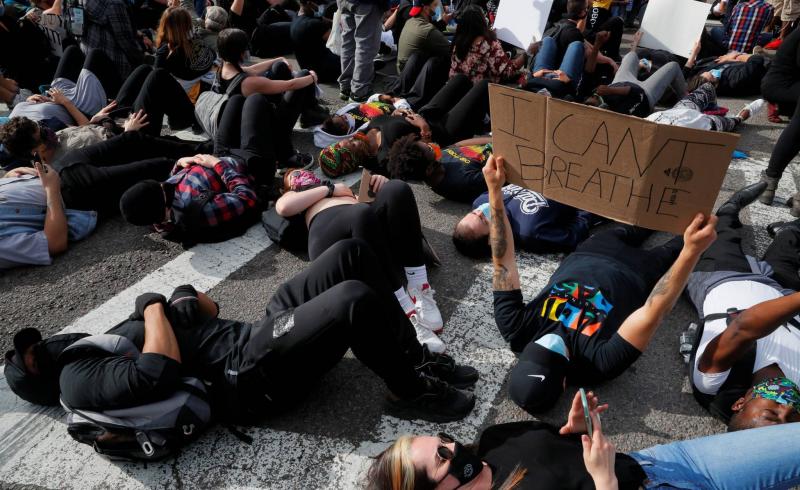The "die-in" protest technique has gained widespread popularity around the world amidst the ongoing conflict between Israel and Gaza, becoming the most popular method of protesting various issues in recent years. However, it is not a new concept; it has a history spanning over 50 years. The "die-in" emerged in the 1960s and 1970s, used by protesters concerning various issues from the Vietnam War to the campaign against nuclear weapons to demands for greater attention to AIDS. By the mid-1970s, "die-ins" had become a significant part of protest methods among social movements in North America and, to a lesser extent, Europe, according to a report from "Active History."
Local groups and organizations learned this tactic and how to implement it from newspapers, activist publications, and direct contact with organizers from other cities involved in those issues. In the 1970s, protest organizers advocating for cyclist safety on the roads in Canada learned how to execute these types of protests after a demonstration in Philadelphia in 1972, where 420 people simulated death in protest against nuclear weapon testing, according to the report.
One of the earliest references to the term "die-in" was in the coverage of a protest organized by environmental advocates in Boston to celebrate the first Earth Day on April 22, 1970. A few dozen people participated, some carrying coffins, simulating death in front of ticket counters at Logan International Airport to raise awareness about pollution. Other early examples include a protest organized by the "People Against Nerve Gas" movement in Seattle in May 1970 and a significant protest for the Women's Strike for Peace in New York in 1972.
The protest typically begins with a sudden takeover of a crowded public space by demonstrators, who often use symbolic props like coffins or blood-stained rags, and there may be slogans, singing, or silence. The "die-in" usually lasts for a short time before police typically intervene to disperse the protesters from the public space they occupy.
Dozens or hundreds of demonstrators portraying the dead transform a public area, such as a street corner or hotel lobby, into a battlefield or a site of symbolic tragedy. This approach has also been employed in support of advocacy for African American rights, where individuals have sat or even laid down on the ground over the years to assert their rights in public space and demand equal citizenship, significantly impacting protest culture in the 1960s and 1970s around the world.
A report from "Political Violence" indicates that traditional protests are limited to activists chanting slogans. In contrast, the "die-in" involves activists dramatically reenacting scenes of violence in their efforts for accountability and an end to violence, which "draws more attention." Protesters may shout messages or use signs to add context to the physical scenes being represented, which can also include images of victims, along with portrayals or effigies of the deceased, coordinated outfits, chalk outlines of bodies on the pavement, and reenactments of killings, such as mock executions or firing squads. The report notes that some protests aim to bring to light concealed events occurring away from public view, such as secret massacres or cases of disappearance, and to represent them before the audience.




